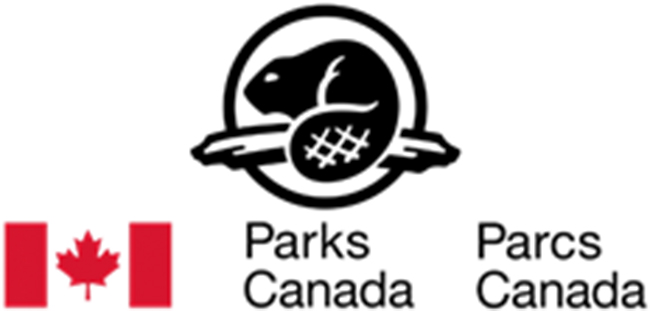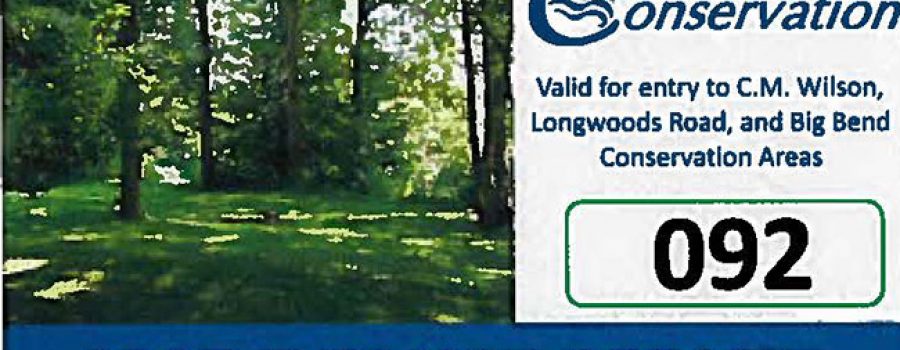No, they’re not.
If you ordered the FREE 2017 Parks Canada Discovery Pass in celebration of our country’s 150th anniversary, you’ll have an incredible time exploring Canada’s national park system.
Before you hang that pass on the mirror and head out to explore the many natural wonders that our country has to offer, you should know the difference between our national parks and the many great conservation areas within the Lower Thames Valley watershed.
Only Parks Canada national parks are offering free day-use admission this year.
But aren’t ALL parks in Canada considered ‘national’ parks?
While we are very proud that our conservation areas, they aren’t considered national parks. In fact, our conservation areas within the Lower Thames Valley watershed are really quite different than those Parks Canada offers.
National parks offered by Parks Canada are easily recognized by the logo that greets you at the entrance to their parks:

When you arrive at a Lower Thames Valley Conservation Area, you’ll see the Lower Thames Valley Conservation Authority logo:

How many national parks are there in the Lower Thames Valley watershed?
Would you believe there aren’t ANY national parks within the watershed? In fact, the closest national park to the the Lower Thames Valley watershed is Point Pelee National Park approximately 1 hour southwest of our Administration Office in Chatham
There are five Parks Canada national parks in Ontario*:
- Bruce Peninsula National Park
- Georgian Bay Islands National Park
- Point Pelee National Park
- Pukaskwa National Park
- Thousand Islands National Park
*The free 2017 Parks Canada Discovery Pass is also accepted at National Marine Conservation Areas and National Historic Sites.
Does the LTVCA offer a Season’s Day Use Permit to its conservation areas?
We do in fact offer a Season’s Day Use Permit that will provide you with access to 3 of our active conservation areas within the Lower Thames Valley watershed – Longwoods Road Conservation Area at 8348 Longwoods Road – south west of Mount Brydges; C.M. Wilson Conservation Area at 21799 Fargo Road – 8.5 km south of Chatham and Big Bend Conservation Area at 21239 Big Bend Road east of the Village of Wardsville.
* You can buy your Season’s Day Use Permit at Longwoods Road Conservation Area or C.M. Wilson Conservation Area when their buildings are open.
* You can also buy your Season’s Day Use Permit at the Administration Building at 100 Thames Street in Chatham during regular business hours.
* The 2017 Lower Thames Valley Conservation Authority Season’s Day Use Permit is $60. Special events in these conservation areas may not be included.
Why aren’t Lower Thames Valley Conservation Area Season’s Day Use Permits free this year?
Canada’s national parks system is operated by our federal government, while the Lower Thames Valley Conservation Authority’s conservation areas are owned and operated by the Lower Thames Valley Conservation Authority.
Federal parks operated by Parks Canada, and even Ontario Parks operated by the provincial government, receive tax dollars to provide the access and services they do to visitors. Lower Thames Conservation Areas receive no federal or provincial tax dollars and operate on the funds they receive through gate access fees, camping revenue, pay-for-use and some municipal levies.
The revenue we receive keeps our conservation areas open and operating each season.
Don’t be afraid to explore
Millions of Canadians have received their 2017 Parks Canada Discovery Pass already. We believe that this opportunity will encourage many Canadians to get back to nature and explore the many natural wonders beyond their own backyard this year.
For those who may visit a Lower Thames Valley Conservation Area for the first time this season, or those who may be coming back to us for a return visit, we don’t want you to be frustrated because we don’t accept the Discovery Pass.
Please take the time to share this post with your friends and relatives. Remind them that the Parks Canada Discovery Pass is only good for day-use access at Canada’s national parks and not at Lower Thames Valley Conservation Areas.

